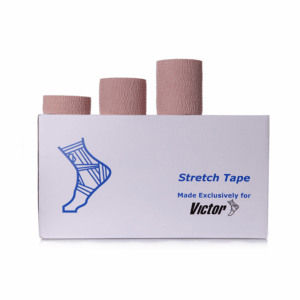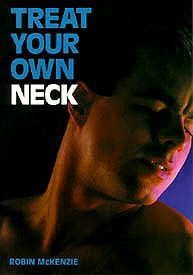Cycling Injuries
Updated:
Most cycling injuries occur either traumatically (from a fall off the bike or collision) or from overuse (often related to poor bike set-up or excessive training). Traumatic injuries tend to involve the upper limb whilst overuse injuries typically affect the lower limb or spine.
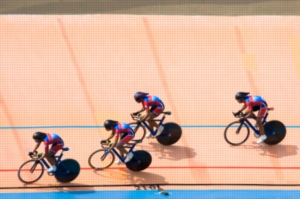
Most Common Traumatic Cycling Injuries
Common cycling injuries which may occur traumatically due to a collision or fall from the bike include:
Shoulder
Broken Collar Bone
A break in the collar bone of the shoulder (clavicle – figure 1) usually due to a fall off the bike onto the point of the shoulder or outstretched arm, or, from a forceful direct impact directly to the clavicle. Associated with severe shoulder pain, tenderness on firmly touching the affected region of the bone and sometimes swelling or a bony deformity.
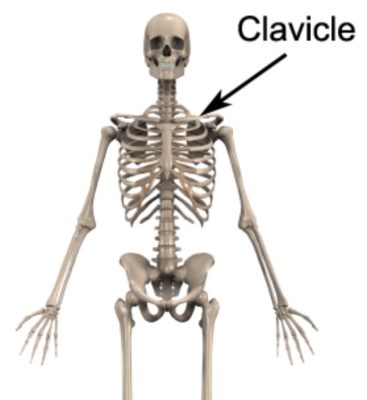

Members Only ContentBecome a PhysioAdvisor Member to gain full access to this exclusive content. For more details see Become a Member. Already a member? Login Now
Elbow & Forearm
Fractured Radius or Fractured Ulna
A break in the radius or ulna bone (figure 6) usually due to a fall from the bike onto an outstretched hand. Associated with severe pain usually located in the forearm that may radiate into the wrist, hand, elbow or upper arm, in addition to swelling, tenderness on firmly touching the affected region of the bone, markedly reduced wrist and elbow function and sometimes bony deformity. Pain typically worsens when trying to use the hand brakes on the bike or upon weight bearing through the affected wrist.
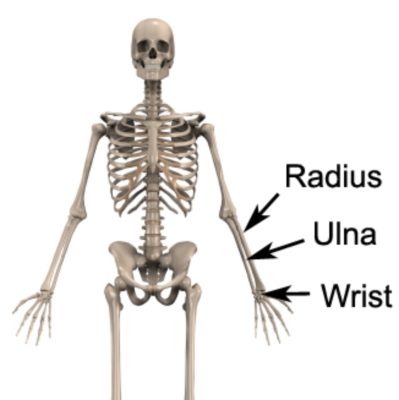
Wrist & Hand
Fractured Wrist (Colles fracture)
A break in the radius bone near the wrist (figure 6) usually due to a fall from the bike onto an outstretched hand. Associated with severe pain usually located on the thumb side of the wrist that may radiate into the thumb, hand or forearm, in addition to swelling, tenderness on firmly touching the affected region of the bone, markedly reduced wrist function and sometimes bony deformity. Pain typically worsens when trying to use the hand brakes on the bike or upon weight bearing through the affected wrist.

Members Only ContentBecome a PhysioAdvisor Member to gain full access to this exclusive content. For more details see Become a Member. Already a member? Login Now
Most Common Overuse Cycling Injuries
Areas of the body which are particularly prone to overuse cycling injuries, most of which can be attributed to incorrect or poor bike setup, include the knees, lower back, upper back and neck. Some of the more common overuse cycling injuries include:
Knee
Patellofemoral Pain Syndrome
An overuse injury to the under surface of the knee cap which typically presents as pain at the front of the knee. Pain may be particularly noticeable whilst in heavier gears, standing out of the saddle, walking down stairs, hopping, kneeling, lunging, squatting or landing from a jump. Associated with pain on firmly touching the patellofemoral joint (i.e. edge of the knee cap – figure 8) and occasionally a grinding sensation behind the knee cap.
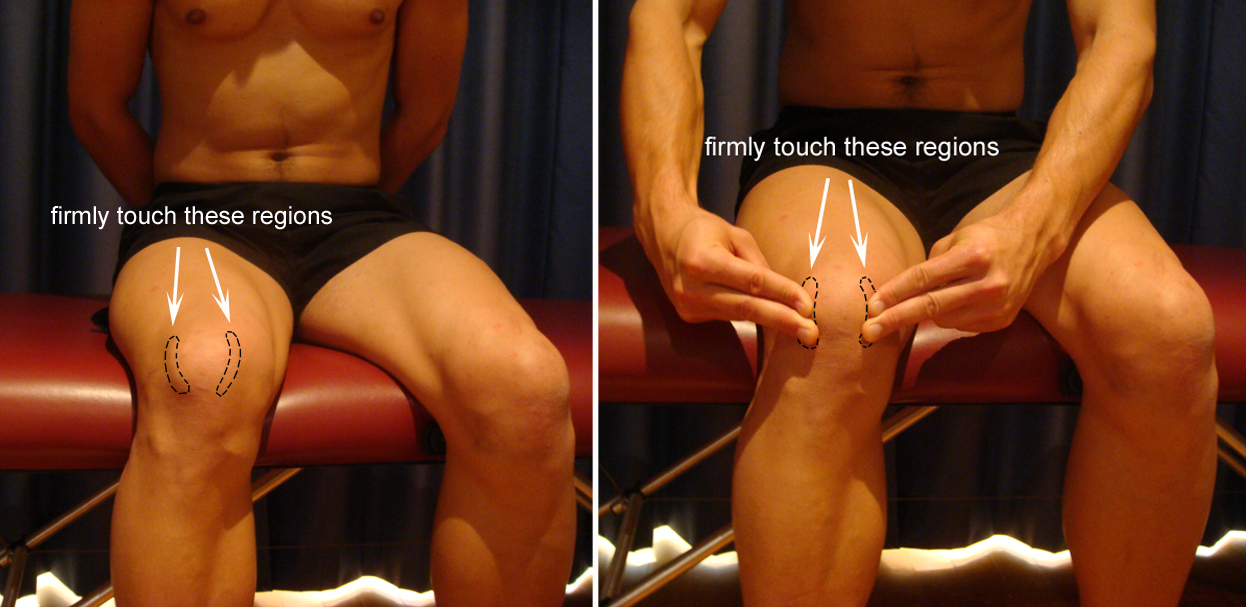

Members Only ContentBecome a PhysioAdvisor Member to gain full access to this exclusive content. For more details see Become a Member. Already a member? Login Now
Back & Neck
Lumbar Disc Bulge
Tearing of connective tissue surrounding a disc in the lower back with subsequent bulging of disc material (figure 12). Typically as a result of repetitive or prolonged bending forwards of the lower back (e.g. cycling), during sitting, lifting or twisting or following trivial movements, such as picking up a pencil or sneezing. May cause lower back pain centrally or on one or both sides of the spine, with or without symptoms radiating into the buttock, groin, thigh, lower leg, ankle or foot. Pain may increase on firmly touching the affected level of the spine and there is often associated muscle spasm and restricted spinal movement. Occasionally there may be no lower back pain, with only symptoms down the affected leg. Pins and needles or numbness are occasionally present in the affected leg or foot. Symptoms often increase with riding long distances, repetitive or prolonged sitting, bending, lifting, coughing or sneezing and are often worse first thing in the morning.
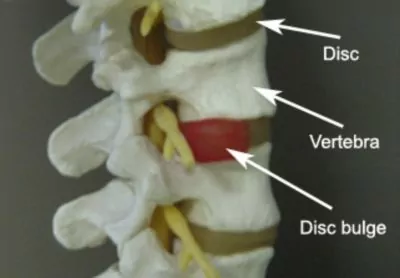

Members Only ContentBecome a PhysioAdvisor Member to gain full access to this exclusive content. For more details see Become a Member. Already a member? Login Now
Wrist & Hand
Carpal Tunnel Syndrome
Narrowing of the tunnel in the wrist formed by connective tissue (the flexor retinaculum) and the small carpal bones of the wrist, resulting in compression of structures within the carpal tunnel, such as the median nerve (figure 14). Typically occurs due to repetitive or prolonged gripping activities (e.g. cycling and heavy use of the hand brakes) or general use of the hand. Can be aggravated by poor bike setup relating to handle bar and seat position. Associated with a pain or ache in the wrist that may radiate into the hand, fingers or forearm and often pins and needles or numbness in the fingers (excluding the little finger). Symptoms are often worse first thing in the morning and pain may increase during gripping or lifting activities or during general use of the hand. Pain may also increase on firmly touching or tapping the median nerve at the front of the wrist (Tinel’s test – figure 15) and this may cause pins and needles or altered sensation into the fingers.
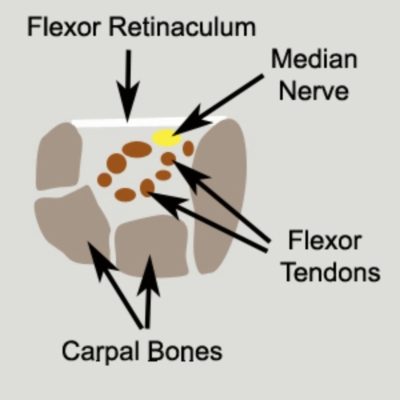
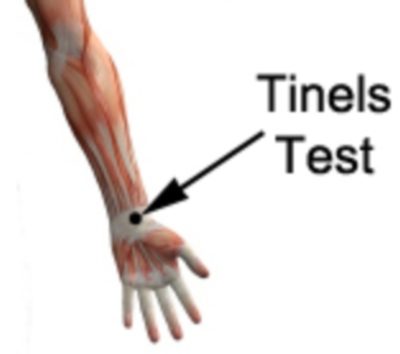
 Contributing Factors to Cycling Injuries
Contributing Factors to Cycling Injuries
A number of factors may contribute to the development of cycling injuries, including:
- Poor bike setup
- Incorrect bike size
- Excessive training
- Poor cycling technique
- Inappropriate footwear or cleat alignment
- Inadequate warm up
- Inadequate recovery between sessions
- A lack of fitness or conditioning

Members Only ContentBecome a PhysioAdvisor Member to gain full access to this exclusive content. For more details see Become a Member. Already a member? Login Now
 Injury Prevention Tips for Cycling Injuries
Injury Prevention Tips for Cycling Injuries
Bike Setup
Many overuse cycling injuries can be prevented (or successfully managed) by ensuring a correct bike setup for riding. Correct bike setup may also help to minimise the likelihood of traumatic cycling injuries by improving stability and therefore reducing the risk of falls or collisions. To learn more about saddle height, saddle position, seat angle, posture length, handle bars and cleat alignment, read our helpful tips in Bike Setup.
Bike Condition
It is vital to maintain your bike in good working order. Get your bike serviced regularly to ensure it is safe and secure.
Footwear
Ensure your cleats are properly adjusted and check them regularly. If you are not used to wearing clip-on cleats, practice in a safe environment before taking to the roads.
Technique
A common technique error with long distance cycling is pedalling in too low a gear. Protect your knees and prevent leg fatigue by keeping the revolutions per minute (rpms) of your pedals between 60 and 110. Cycling in heavier gears and pedaling slowly places undue stress on the knee joints.
Ride safely
This includes:
- Riding to your own ability level
- Riding appropriately to the conditions
- Leaving enough room from the cyclist in front of you so that if they stand up (which pushes their bike back underneath them) they won’t overlap your front wheel.
- Staying alert, always, even on familiar routes
- Keeping your eyes on the road ahead
- Having regular breaks to rehydrate, re-energise and to minimise fatigue
- Wearing appropriate clothing
- Wearing correctly-fitted safety equipment (such as helmet, protective eyewear, gloves etc)
- Use your own properly set up bike and equipment rather than borrowing someone else’s
- Be familiar with and adhere to the road rules

Members Only ContentBecome a PhysioAdvisor Member to gain full access to this exclusive content. For more details see Become a Member. Already a member? Login Now
 Physiotherapy Products for Cycling Injuries
Physiotherapy Products for Cycling Injuries
The following physiotherapy products are commonly prescribed to patients by physiotherapists to assist in the rehabilitation and prevention of cycling injuries:
To purchase physiotherapy products to assist with cycling related injuries click on one of the above links or visit the PhysioAdvisor Shop.
More information
 View detailed information on Bike Setup.
View detailed information on Bike Setup.
 Find a Physio
Find a Physio
Find a physiotherapist in your local area who can treat cycling injuries and ensure you have a correct bike setup to minimise the likelihood of cycling related injuries.

Link to this Page
If you would like to link to this article on your website, simply copy the code below and add it to your page:
<a href="https://physioadvisor.com.au/injury-diagnosis/sports-injuries/cycling-injuries”>Cycling Injuries – PhysioAdvisor.com</a><br/>PhysioAdvisor provides detailed physiotherapy information on cycling injuries including most common cycling injuries, contributing factors and injury prevention tips.
Return to the top of Cycling Injuries.

